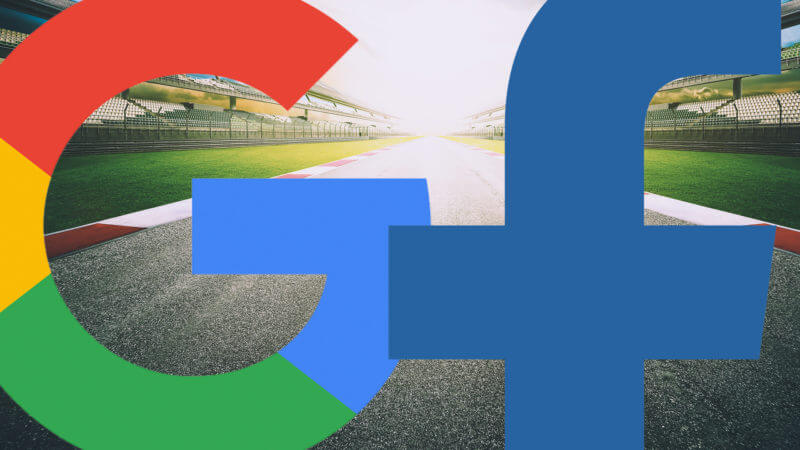By Brian Handly
Facebook and Google are dominating mobile advertising, so what are marketers to do? Columnist Brian Handly discusses the solution to competing with the internet behemoths.
Early this year, I was invited to attend a meeting with a digital sales team for a well-known media company and an agency with which they’ve been doing business for years. Our supporting role was to provide answers to anything related to location-based advertising.
As the conversation progressed, the truth came out. The agency principal looks at the sales team, shrugs and says, “I love working with you, but my clients are pushing me to advertise on Facebook. They’ve got great targeting, and everybody uses it. I’m struggling to send business your way.”
We immediately witnessed the blood draining from the faces of the sales reps, and the look of dejection that overcame them before they quickly rebounded in the positive fashion that salespeople often do.
This conversation happens hundreds, if not thousands, of times each day across the US. Any sales team that competes for ad dollars from local, regional or national advertisers is hitting a brick wall.
While Google has been a dominant force in digital ad spend for decades, Facebook has risen to become an advertising juggernaut. The problem is that the “duopoly” of Google and Facebook significantly impedes the ability for any other publisher to gain a foothold or even a tiny slice of the mobile advertising pie.
The stats that show Google and Facebook now command 99 percent of the growth opportunity in digital ad spend are both astounding and terrifying. They’re beating everyone else because they’ve built powerful targeting capabilities on top of troves of behavioral and demographic data. They make the tools simple enough to operate so that everyone from national brands to the local florist can build a campaign in 30 minutes.
For the publishers and marketers that wish to compete with these internet giants, the solution lies in making use of their own data or alternative data sources.
Facebook’s ability to create custom audiences based on other data sources is a powerful tool that few marketers take advantage of today. The mechanics are simple: Upload a CSV file of your own data, which Facebook then matches to their own users. The end result is a targeted audience of Facebook users who are matched to your own data sets.
The data sources a marketer can use when creating a custom audience include email, phone number, mobile advertiser ID, website traffic, app activity and location-based audiences, plus at least a dozen other criteria. Instagram, Twitter and Snapchat all provide similar functionality.
The benefits of making use of your own unique data sets
There are at least three benefits of using different data sources to build target audiences on social media. First, there is a cost savings. When a marketer brings their own data to a platform instead of using the built-in targeting tools, the cost-per-click fees can be significantly less.
Second, the ads can perform better. Increasing the relevancy of an audience that a campaign reaches increases engagement and performance.
Third, it provides marketers the targeting capabilities that the social media platforms can’t, or won’t, offer themselves. In the case of location-based audiences, the platforms enable real-time targeting of location and have begun testing the ability to target visitors to one’s own locations. They do not offer any competitive location targeting or the ability for a consumer packaged goods company to reach shoppers who visit stores that stock their products.
For the marketers and agencies that can source this data, they now have a significant competitive advantage and a valid reason to earn that ad spend, as opposed to having it be consumed by Facebook directly.
This last point will become even more salient in 2018. A recent article shared results from over 60 agencies which show that working with Facebook is a big challenge. The social media giant frequently attempts to circumvent agency-brand relationships by approaching the brand directly, citing its ability to provide more and better data than the agency can provide.
Ultimately, the smart marketers that wish to compete should begin taking advantage of their own unique data sets and finding new ones to remain competitive. They will not only be more innovative, but they’ll provide better, more efficient and effective ad campaigns for themselves and their clients.
Opinions expressed in this article are those of the guest author and not necessarily Marketing Land. Staff authors are listed here.
Brian Handly, CEO of Reveal Mobile, possesses more than 20 years of technical, operational and executive management experience, with 18 years of that in advertising technology. Brian was co-founder and CEO of Accipiter, which was acquired by Atlas in December of 2006 followed by the $6.1 billion acquisition of Atlas by Microsoft in 2007. Before their recent acquisition, Handly served on the Board of Directors for WebAssign, and currently serves as an Operating Partner for Frontier Capital. Brian also has extensive experience as an angel investor and is an active advisor for several North Carolina technology companies.





